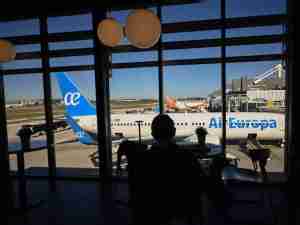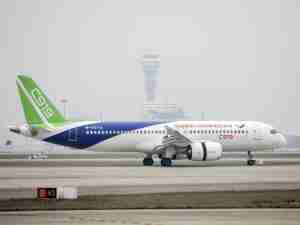(Bloomberg) -- Singapore will start work on a fifth terminal at Changi Airport -- regularly voted among the world’s best -- with a revised design that allows it to adjust capacity during a pandemic.
The move comes as the city-state works to cement its place as Asia’s primary aviation hub, with rival Hong Kong still imposing Covid quarantines and other border restrictions.
Singapore Prime Minister Lee Hsien Loong detailed the plans in his National Day Rally address Sunday.
“In the longer term, air travel will keep growing because of the fast expanding middle-class in our region,” Lee said. “We redesigned T5 to be more resilient, in particular to operate more safely and flexibly during a pandemic, to scale operations up and down more easily, and to isolate passengers from different flights to limit cross-infection.”
The terminal, expected to be completed in the middle of next decade, may serve as a model for other airports globally in preparing for events that are out of their control after the pandemic decimated the travel industry. Even before Covid, Changi had ambitious plans for a heavily automated terminal, minimizing touch-points and letting robots do the bulk of the work. The virus served as a catalyst to fine-tune those plans.
The move bolsters Singapore’s position ahead of Hong Kong, which already has similar capacity to Changi, but where ongoing Covid restrictions mean flight activity remains limited. In contrast, Singapore has gradually lifting most curbs, and even plans to scrap rules for wearing masks in most indoor settings.
Read more: The Airport of the Future Is Here. And It Doesn’t Need Humans
While other airports are looking at similar designs, most don’t have such ambitious expansion projects, giving Changi an edge to build an airport designed for a post-pandemic era, said Brendan Sobie, Singapore-based founder of consultancy Sobie Aviation.
“Singapore is always trying to stay ahead of the curve and maintain its position as a leading hub for this region,” Sobie said. “Changi has an opportunity to take the lead in terms of post-pandemic airport design and it is hardly a surprise it’s keen to do just that given its history and continued aspirations.”
Enhanced Ventilation
The gigantic Terminal 5 -- a monster building opposite the four existing terminals and capable of handling 50 million travelers a year -- will be one of the largest and most automated passenger terminals in the world. The plans include an array of cameras and technology that bypass the traditional flight control tower, a laser-guided aerobridge that positions itself to let fliers disembark, and automated vehicles to unload baggage.
“It’s huge,” Lee said. “In fact, we’re building one more new Changi airport.”
The design of the terminal will allow Changi to operate smaller sub-terminals when needed, following lessons from the pandemic, with space that could be converted for uses like testing or segregation of high-risk passengers, the Ministry of Transport said in a statement.
The terminal will have provisions to reduce disease transmission, including contactless systems at passenger touch-points, and enhanced ventilation that can be activated during a pandemic to increase fresh air and avoid mixing air. Construction will start in about two years, according to the statement.
Read more: How Singapore Airlines Beat the Pandemic and Came Out Ahead
The latest announcement follows a string of measures Singapore has taken to make the city-state’s airport more alluring.
In May, Singapore Airlines Ltd. opened new-look lounges at Changi following a S$50 million ($36 million) upgrade, offering private day rooms, showers and cocktail bars overlooking the runway. A month later, the airport -- which houses a five-story glass dome called Jewel featuring the world’s highest indoor waterfall -- announced plans to reopen two terminals that were shuttered during the pandemic as travel demand roared back stronger than expected.
The new terminal, expected to cost “tens of billions of dollars” according to the government, also features a project called Changi East Development, which envisages a three-runway system, construction of tunnels and other underground infrastructure, and an industrial zone.
While plans to tender for bids to build the terminal were delayed for two years by the pandemic, Singapore used that time to reassess long-term prospects, Lee said. The government also improved the terminal’s design and concluded the future of aviation remains bright, he said.
“T5 will be a place that all Singaporeans can take pride in and enjoy,” Lee said. “T5 will show the world what sort of place Singapore is.”
©2022 Bloomberg L.P.










